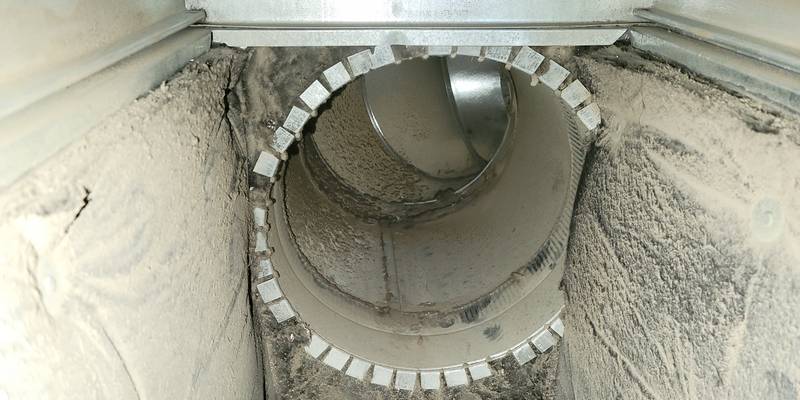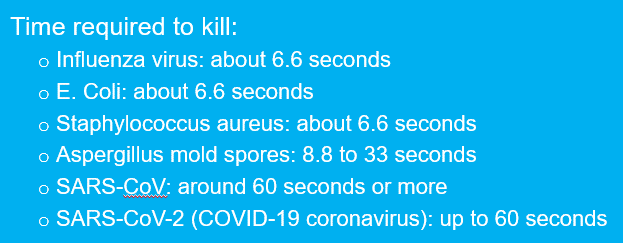HVAC Upsells You Can Skip
1.) Duct Cleaning
Yes, duct cleaning. Despite the near constant marketing behind the service, there’s no science to back up the technique. Why is there dust in your ducts in the first place? Two reasons. First, the particles were too heavy to remain buoyant in the air stream and deposited onto the bottom of the duct. What about the dust on vertical surfaces? This dust accumulates due to static electrical charges in the particles and duct. If this is true (it is), what would allow the particles to jump back into the airstream and into the house? Nothing.
Think about it – why does the level of dust increase over time? If it were regularly re-aerosolized and brought back into the home, the dust level in the duct would not increase. But it does. Duct cleaning only removes the dust that was never going to re-enter the airspace of your home anyways. Any perceived benefit is purely psychological.

This dust isn’t going anywhere.
What about the viruses and bacteria that grow in your ducts?
In a very humid climate this might be possible if your AC system is poorly designed. In Washington? It’s not going to happen. The air in your ducts is extremely dry. In fact, it’s by far the driest air in your home. It’s just left your furnace, which typically heats the air to ~100F. The relative humidity at this temperature is very low. Mold growth, bacteria, etc. do not do well in these conditions. Our sister company, Environix, has performed thousands of indoor environmental inspections and not once encountered mold or bacterial growth in a duct unless there was a plumbing leak saturating the ducting.
But my duct cleaner swears it works
Put it to the test. There’s a very simple way to evaluate the effectiveness of duct cleaning. Sample the air exiting the registers with a particle counter before the cleaning and repeat the testing after procedure. You should see a noticeable decline in particle counts. This would be a great way to show customers how well duct cleaning works. The results are clear and instant. Why don’t duct cleaners carry these devices? Duct cleaning doesn’t reduce the particulates in the air.
A better solution? Redirect the money you’ve allocated to duct cleaning and spend it on a 4″ high quality air filter. The evidence of a furnace filter’s effectiveness is found in the ducts. Look at your ducts and compare the return vs. the supply lines. You’ll notice all the dust accumulates in the return ducts. This is the unfiltered air that is pulled back into the furnace for reheating. The supply ducts are typically clean and dust-free. The furnace filter is stripping out the dust from the air before sending it back into the house.
2.) High efficiency furnace + heat pump combos
Heat pumps are great. So are high efficiency furnaces. However, if you combine them together, you’ve wasted a lot of money. Heat pumps in Seattle, or anywhere in Western Washington, will handle the heating load 99% of the year. Only on the coldest days will the furnace engage to help bring extra heat to the home. The benefit of a high efficiency furnace, as the name implies, is efficiency. They squeeze more energy out of a given amount of natural gas. Yet when you have a heat pump, all of that extra efficiency is unused. You’re paying a premium for a feature that will never pay for itself. It would be akin to buying an electric car and then committing to ride your bicycle everywhere.
Now, there are a few good reasons why a high efficiency model makes sense. Often, a customer already has a high efficiency furnace installed when they decide to add a heat pump. Retrograding to a low-efficiency heat pump would likely cost more, as the exhaust ducting system would require complete replacement. You’re better off just picking a high-efficiency furnace.
Caveat
While a regular efficiency furnace is sufficient, you definitely want a variable speed motor. This allows the fan to cycle up and down based on the heating and cooling demands. With a fixed speed motor, you’re stuck with all or nothing. In mild climates such as Seattle, this causes your heat pump to cycle on and off. This is very inefficient and also shortens the life of the equipment.
3.) UV filters
UV filters kill viruses and other microbials. The technique has been utilized in laboratory and medical settings for decades. The problem occurs when you apply the technology to moving air. The numbers below illustrate the problem.
Even the slowest HVAC system moves the air past the UV filters within less than a second. This isn’t nearly enough time to kill even the most susceptible viruses.

